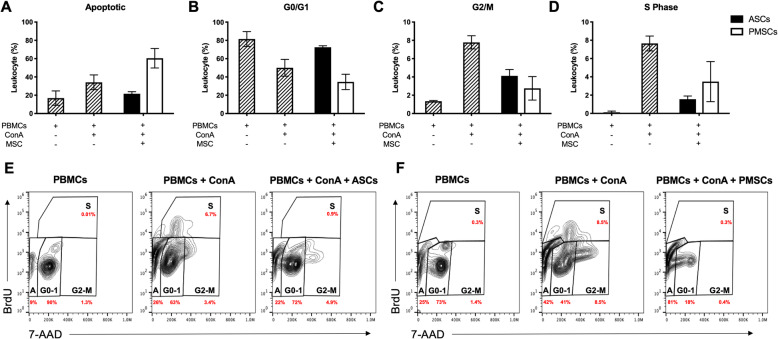Fig. 6.
Inhibition of lymphocyte proliferation by canine ASCs and PMSCs occurs through different mechanisms. Cell cycle analysis was performed using peripheral blood mononuclear cells (PBMCs) and BrdU 5-bromo-2′-deoxyuridine and 7-aminoactinomycin D was measured. Unstimulated PBMCs and mitogen (ConA) activated PBMCs were used as controls. a Canine PMSCs inhibit lymphocyte proliferation by inducing apoptosis. Alternatively, canine ASCs caused cell cycle arrest which is demonstrated by PBMCs accumulating in G0/G1 (b) and hindering cells from entering G2/M (c) or DNA synthesis (S phase) (d). Representative images of cell cycle flow scatter plots and gating strategies for leukocyte DNA content (7-AAD) and proliferation via BrdU incorporation of PBMC controls (e, f) and co-incubations with canine ASCs (e) and PMSCs (f) are shown. BrdU, 5-bromo-2′-deoxyuridine and 7-aminoactinomycin D; ConA, concanavalin A; LSA, leukocyte suppression assay; MSC, mesenchymal stem cell

